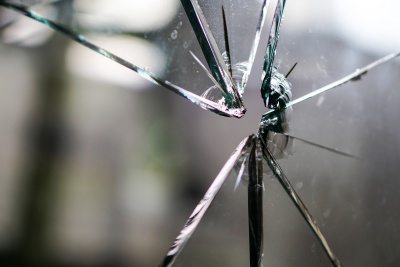Difference between revisions of "Sharp edges and splinters"
(added image – no associated text yet) |
(→Related: added Spill avoidance guideline) |
||
| (4 intermediate revisions by the same user not shown) | |||
| Line 1: | Line 1: | ||
Sharp edges and splinters are a significant issue for health and environment. | Sharp edges and splinters are a significant issue for health and environment. | ||
| − | + | [[File:Broken glass.jpg|400px|thumb|right|If [[gemstone based metamaterial|advanced metamaterials]] do not [[emulated elasticity|emulate elasticity]] (e.g. because not doing it means less development effort) then these advanced materials can behave rather brittle, just like glass does. In that case it would be desirable to at least have strategies in place to reduce the hazardousness of the smithereens.]] | |
| − | [[File:1280px-Amant.JPG| | + | [[File:1280px-Amant.JPG|250px|thumb|right|Glass takes a long time to loose its sharp edge hazard. At least it does not release toxic material in the process.]] |
Up: [[Spill of sub microscale objects]] | Up: [[Spill of sub microscale objects]] | ||
| Line 39: | Line 39: | ||
* [[Recycling]] | * [[Recycling]] | ||
| − | * | + | * [[Hierarchical controlled breakage behavior]] |
* [[Mobility prevention guideline]] | * [[Mobility prevention guideline]] | ||
| + | * [[Self repairing system]] | ||
| + | * [[Weathering and erosion]] | ||
| + | * [[Spill]] – [[Spill avoidance guideline]] | ||
[[Category:Technology level III]] | [[Category:Technology level III]] | ||
[[Category:Technology level II]] | [[Category:Technology level II]] | ||
Latest revision as of 18:24, 1 June 2021
Sharp edges and splinters are a significant issue for health and environment.

Up: Spill of sub microscale objects
Health
Splinters of products especially of advanced states of APM technology but also from intermediate level technology could if not well designed potentially pierce the skin of humans or animals.
If atomically precise manufactured products are broken apart a different surface will appear potentially increasing that problem. Also if the products base structure is not well designed from the fractured diamondoid surface very small amounts (since they come only from the surface?) of molecular machine elements (DMMEs) might irreversibly leave the machine phase (e.g. bearings might slide of their axles) and pose threats of inhalation or ingestion. Depending on the dissolvability chemical toxicity and structural effect this might be harmless or harmful. Due to the low expectable dose the structural effects may be the most dangerous ones. To investigate: can highly symmetric simple forms of DMMEs act like hormones - (it seems unlikely).
Environment
If materials are made that behave in a brittle way or can be subject to abrasion in any other way tiny fragments of those materials can leave the machine phase and contaminate the environment. (See: Recycling)
Splinter prevention
To prevent or at least strongly reduce these issues several measures can be taken:
- avoidance of 90 degree edges on outer surfaces of products (and maybe even microcomponents?); usage of 135° edges as far as possible.
- inclusion of predetermined breaking points e.g. at the microcomponent borders (the more reversible the better); The broken apart surfaces should as far as possible also adhere the 90 degree avoidance rule. Very advanced systems may be able to actively and as good as instantaneously smoothen the fresh fracture plane by retracting sharp protrusions and capping the surface with a new shell.
- usage of slightly water soluble and rather nontoxic diamondoid building materials
- if some form of legged mobility for microcomponent replacement or recomposition is used the legs must be force bendable in all directions till they contact the units main body so that the lever effect can't break them off. In case of the yet speculative utility fog additionally the fogs surface needs to carry around a dynamic smoothing shell - a very nontrivial matter.
Repairing macroscopically fractured parts (quasi welding) or reclaiming their microcomponents (inversion of the upper assembly levels) is another but related topic where dirt and alignment play a role.
Related: Pinching
Beside cutting your skin squeezing your body-parts may also be a danger of AP products.
If two perfectly atomically flat (but passivated) surfaces come together without any dirt in-between they will stick together with enormous force (Van-der-Waals force) - this is kind of an unintended surface welding. In principle it is reversible but the force is probably too high to do the splitting by hand [todo: link to calculations page]. Since this force will only set in on distances in the sub nanoscale there's no danger of directly pinching yourself with that. At best you can get caught. But there is a second effect. Perfectly flat surfaces that stick together will also exert a sidewards force to a direction in which the overlapping area grows. This way a pinching accident is very much possible. [To investigate: How big is the sidewards slide-driving force depending on the area gradient? Is there a danger to seriously squeeze your fingers? What is the best surface modification to avoid this sticking and sliding (preferably without resorting to a quasi random surface corrugation)?]
